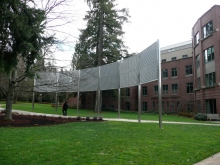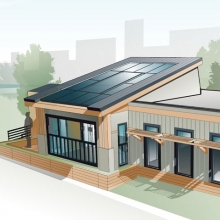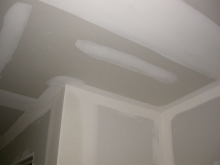According to Architecture 2030, the key to preventing the impending loss of our polar ice caps (as written in my recent blog post) is to reduce our use of coal, which is used to generate electricity. Mazria, the founder of Architecture 2030, recommends we reduce our use of coal first by using passive solar solutions, and then by supplementing those solutions with active eco-friendly technologies to get us to cut emissions that ultimately lead to the melting of Earth's polar ice caps.
The Knowlton School of Architecture (KSA) and The College of Engineering at The Ohio State University partnered to compete in the 2009 National Renewable Energy Lab's Solar Decathlon Competition that was held in October at the Oval in Washington D.C. The team of OSU architecture and engineering students, led by David Nedrow and Deanna Hinkle, who both were graduate students in the Masters of Architecture program at OSU, presented a compelling design that functions off-the-grid (the home generates its own electricity and does not depend on traditional public utility services) with both passive solar design and active solar technologies.











